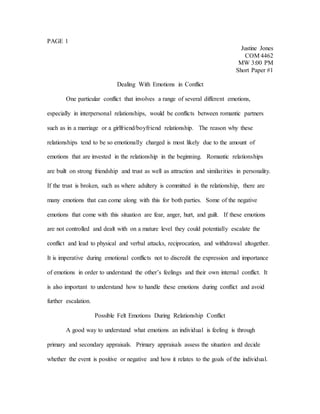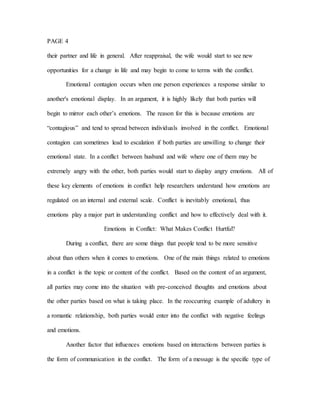This document discusses emotions in conflict, specifically romantic relationship conflicts. It explores common emotions felt during relationship conflicts like anger, hurt, guilt and sadness. It describes primary and secondary appraisals people use to understand their emotions. Key aspects of emotional expression and regulation in conflict are display rules to alter emotions, emotion work to generate appropriate feelings, reappraisal to decrease negative emotions, and emotional contagion where people mirror each other's displays. The document also examines how the content and form of communication during conflicts can influence emotions and make conflicts more hurtful. Finally, it discusses measures to control emotions like accepting them, identifying one's state, openly discussing feelings, and fostering hope.





